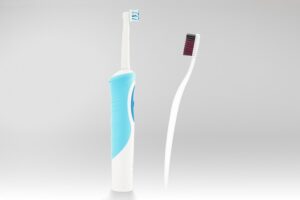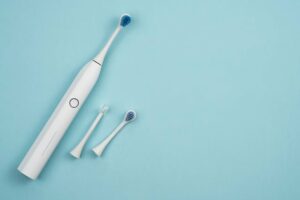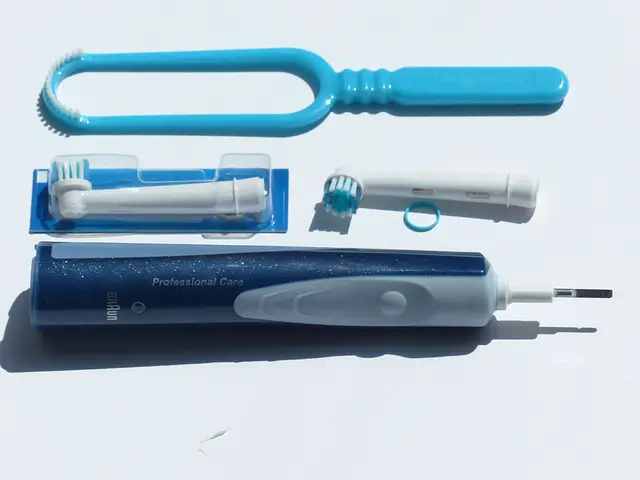Contents
- 1 Are Oral-B electric toothbrush heads recyclable?
- 2 Composition of Oral-B Electric Toothbrush Heads
- 3 Plastic Components: Recyclability Unveiled
- 4 Metal Components: Examining Recycling Possibilities
- 5 Local Recycling Guidelines
- 6 Updates and Changes Over Time
- 7 Consumer Practices for Sustainability
- 8 Conclusion
Are Oral-B electric toothbrush heads recyclable?
With an ever-growing emphasis on sustainable practices in today’s consumer landscape, individuals are increasingly scrutinizing the environmental impact of the products they use daily. This heightened consciousness has sparked a profound interest in the recyclability of everyday items. One such product that commands attention is the electric toothbrush, a staple in oral care routines. As we navigate this era of heightened environmental awareness, a pertinent question arises: “Are Oral-B electric toothbrush heads recyclable?”
Composition of Oral-B Electric Toothbrush Heads
As we embark on the quest to unravel the recyclability of Oral-B electric toothbrush heads, it is essential to first comprehend the materials that form the backbone of these daily essentials.
Overview of Materials:
Oral-B electric toothbrush heads are typically crafted with a combination of materials, the most common being various types of plastics. The handle, bristles, and any additional components often involve a thoughtful selection of materials designed to ensure durability, functionality, and, where possible, sustainability.
Significance of Understanding Composition:
Delving into the composition of Oral-B electric toothbrush heads holds paramount importance when contemplating their recyclability. Different materials possess distinct properties, and the way they interact with the environment varies. By understanding the specific components, we gain insight into the challenges and opportunities posed by the materials used. This knowledge forms the foundation for assessing whether these toothbrush heads can seamlessly integrate into existing recycling processes or if specialized methods are required. As we navigate the intricacies of recyclability, understanding composition emerges as a key factor in determining the environmental impact of these commonplace oral care products.
Plastic Components: Recyclability Unveiled
As we peel back the layers of Oral-B electric toothbrush heads, a significant portion of their composition is dedicated to various types of plastics. Understanding the intricacies of these plastic components is crucial in unveiling the recyclability of these widely used oral care products.
Detailed Exploration of Plastic Components:
Oral-B electric toothbrush heads commonly incorporate plastics in the form of the handle, bristles, and other structural elements. A detailed exploration of these plastic components involves deciphering the specific types of plastics used. From polypropylene to nylon, each material brings its own set of properties and challenges when it comes to recycling. Examining the composition with a discerning eye allows us to pinpoint the diversity within the plastic realm of these toothbrush heads.
Recyclability of Different Types of Plastics:
The recyclability journey takes a nuanced turn as we delve into the various types of plastics present in Oral-B electric toothbrush heads. Not all plastics are created equal in terms of their recycling capabilities. Some are widely accepted in recycling programs, while others pose challenges. This section engages in a thoughtful discussion on the recyclability of different plastic types, shedding light on the environmental implications and potential avenues for sustainable disposal. By deciphering the recyclability puzzle, we gain insights into the broader impact of these plastics on the environment and the circular economy.
In navigating the plastic landscape within Oral-B electric toothbrush heads, we aim to demystify the recyclability of these components and provide a comprehensive understanding of their environmental footprint.
Metal Components: Examining Recycling Possibilities
Beyond the realm of plastics, Oral-B electric toothbrush heads may harbor another crucial element: metal components. An in-depth analysis of these metal parts is essential in exploring the full spectrum of recycling possibilities and understanding their impact on the product’s overall sustainability.
Analysis of Metal Components:
While the primary construction of electric toothbrush heads often revolves around plastics, certain models may incorporate metal components, particularly in the connection points or structural elements. This section embarks on a meticulous analysis, identifying any metal parts within Oral-B electric toothbrush heads. Understanding the nature and extent of metal usage provides a holistic view of the product’s composition.
Insights into the Recyclability of Metals:
Metals, known for their recyclability, play a distinctive role in shaping the sustainability profile of Oral-B electric toothbrush heads. This part of the exploration delves into the recyclability of metals, considering factors such as ease of recycling, environmental impact, and the potential for repurposing. Insights into the life cycle of metal components within the product contribute to a broader understanding of how recycling plays a role in minimizing the overall environmental footprint of these oral care essentials.
By examining the metal components and unraveling their recycling possibilities, we aim to illuminate the role of metals in the sustainability narrative of Oral-B electric toothbrush heads, offering valuable insights into the circularity of materials in these everyday items.

Local Recycling Guidelines
As we navigate the labyrinth of recyclability for Oral-B electric toothbrush heads, the importance of understanding local recycling capabilities emerges as a pivotal consideration. Recycling practices can vary significantly from one locality to another, and being attuned to these nuances is key to responsible disposal.
Highlighting the Importance:
The recyclability landscape is not one-size-fits-all, and local recycling guidelines wield immense influence on the fate of disposed items. This section underscores the importance of recognizing and respecting local recycling capabilities. By aligning our disposal practices with regional guidelines, we contribute to the efficiency of recycling systems and reduce the likelihood of materials ending up in landfills. Understanding the local context becomes a cornerstone in the journey towards sustainable waste management.
Guidance on Checking with Local Recycling Facilities:
Arming oneself with knowledge begins with proactive inquiry. Here, we guide checking with local recycling facilities to gather specific and up-to-date information. This involves reaching out to municipal waste management authorities, visiting official recycling facility websites, or utilizing dedicated hotlines. By navigating these channels, individuals can gain insights into the types of materials accepted, any specialized recycling programs in place, and the recommended practices for items like Oral-B electric toothbrush heads.
In emphasizing the significance of adhering to local recycling guidelines, we empower individuals to make informed choices in line with their community’s waste management practices. This section serves as a practical guide, urging readers to become active participants in the sustainable disposal of oral care products.
Updates and Changes Over Time
In the dynamic landscape of product design and sustainability initiatives, staying abreast of any updates or changes is paramount. As we explore the recyclability of Oral-B electric toothbrush heads, it’s crucial to consider potential shifts that may have occurred over time.
Consideration of Product Design and Recyclability Initiatives:
Oral-B, like many forward-thinking brands, may evolve its product designs and sustainability initiatives in response to changing consumer expectations and environmental considerations. This section delves into the possibility of updates in Oral-B’s product design, materials used, or specific features that could impact the recyclability of electric toothbrush heads. By examining the brand’s commitment to sustainability, we gain insights into the ongoing efforts to enhance the eco-friendliness of their products.
Encouragement for Direct Inquiry:
Empowering readers to take charge of their knowledge, this section encourages direct inquiry. It emphasizes the importance of seeking the latest and most accurate information directly from Oral-B. Readers are urged to explore the brand’s official website, contact customer service, or refer to recent press releases for the most up-to-date insights. This proactive approach ensures that individuals are equipped with the latest information, considering that product details and sustainability initiatives may have evolved since the last knowledge update.
In navigating the realm of updates and changes over time, we aim to provide a comprehensive view of Oral-B’s commitment to sustainability and encourage readers to be actively engaged in seeking the latest information for a more informed understanding of the recyclability landscape.

Consumer Practices for Sustainability
As informed consumers, our role extends beyond understanding the recyclability of Oral-B electric toothbrush heads. This section focuses on empowering individuals with responsible disposal tips and encouraging broader eco-friendly practices for a holistic approach to sustainability.
Empowering with Responsible Disposal Tips:
Responsible disposal is a cornerstone of sustainable living. Here, we provide practical tips for consumers on how to responsibly dispose of Oral-B electric toothbrush heads. This may include guidance on disassembling components, separating materials, and adhering to any specific instructions provided by the manufacturer. By adopting responsible disposal practices, consumers play a pivotal role in enhancing the effectiveness of recycling processes and minimizing the environmental impact of discarded items.
Encouraging Eco-Friendly Practices Beyond Recycling:
Sustainability extends beyond the act of recycling. In this segment, we encourage readers to embrace eco-friendly practices in their oral care routines and daily lives. This might involve opting for products with minimal packaging, choosing rechargeable batteries for electric toothbrushes, or exploring DIY oral care alternatives. By cultivating an eco-conscious mindset, individuals contribute to reducing their overall ecological footprint and fostering a culture of sustainability.
By emphasizing consumer practices for sustainability, we aim to inspire individuals to become agents of positive change in their daily lives. Beyond the realm of recyclability, these practices empower readers to align their actions with their values and contribute to a more sustainable and eco-friendly future.
Conclusion
In this comprehensive exploration of the recyclability of Oral-B electric toothbrush heads, we’ve traversed the landscape of materials, examined plastic and metal components, and considered the importance of local recycling guidelines. We’ve taken a nuanced approach by delving into updates over time, empowering consumers with responsible disposal tips, and encouraging broader eco-friendly practices.
Our journey began with a recognition of the increasing focus on sustainability in consumer products. We scrutinized the composition of Oral-B electric toothbrush heads, unraveling the complexities of plastic and metal components. We emphasized the significance of understanding local recycling guidelines and considered potential updates in Oral-B’s product design or recyclability initiatives over time.
Now, arriving at the heart of the matter, we provide a clear and concise answer to the central question: Are Oral-B electric toothbrush heads recyclable? The nuanced exploration leads us to the conclusion that the recyclability of these toothbrush heads depends on various factors, including the specific materials used, local recycling capabilities, and any recent updates in product design.
As consumers seeking to make environmentally conscious choices, the journey doesn’t end here. Responsible disposal practices and broader eco-friendly habits contribute to a sustainable lifestyle beyond the realm of recyclability. By staying informed and adopting mindful practices, each individual becomes an integral part of the collective effort toward a greener, more sustainable future.





